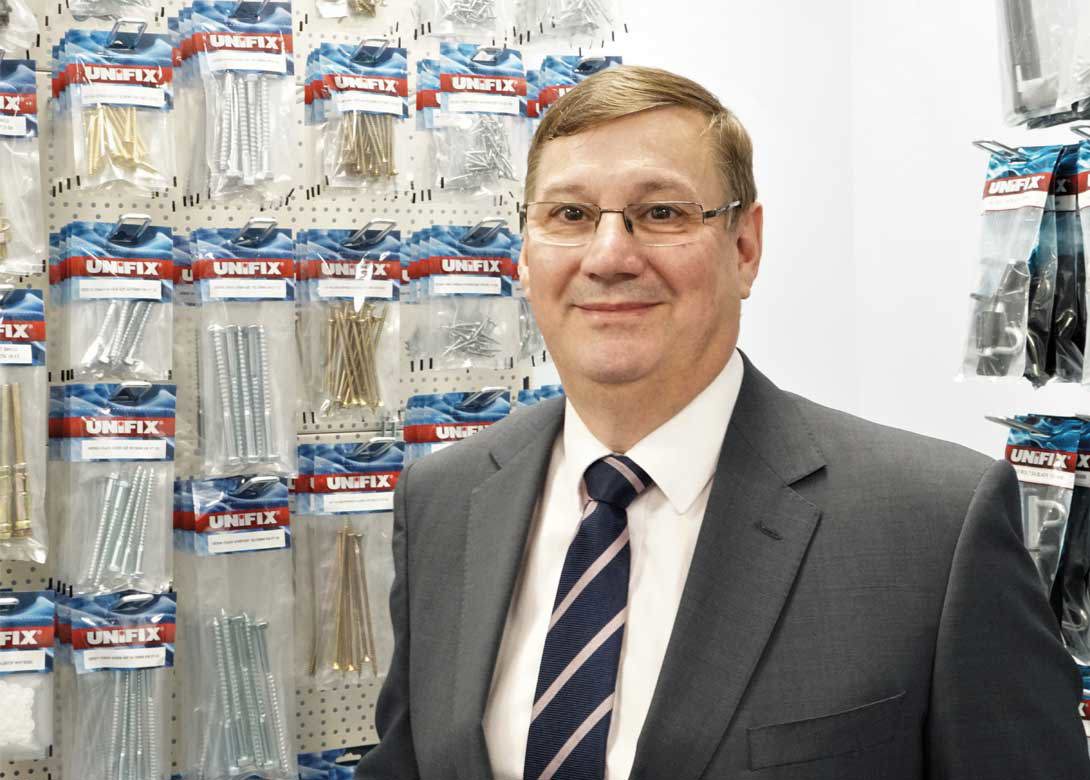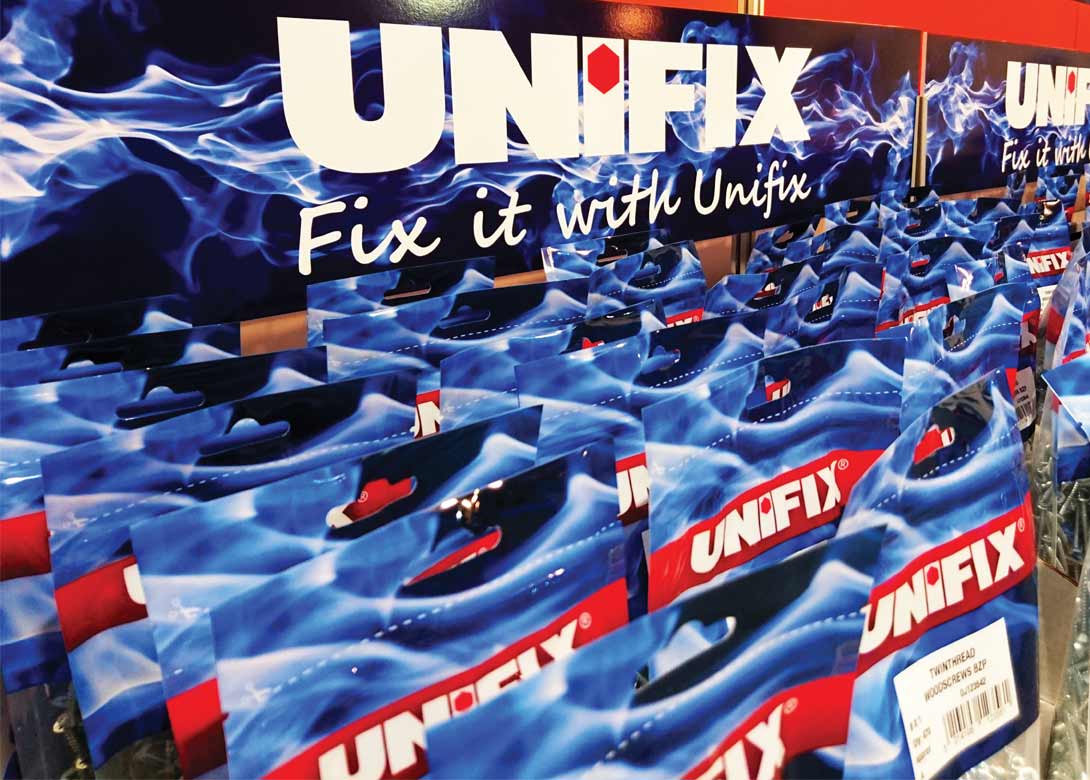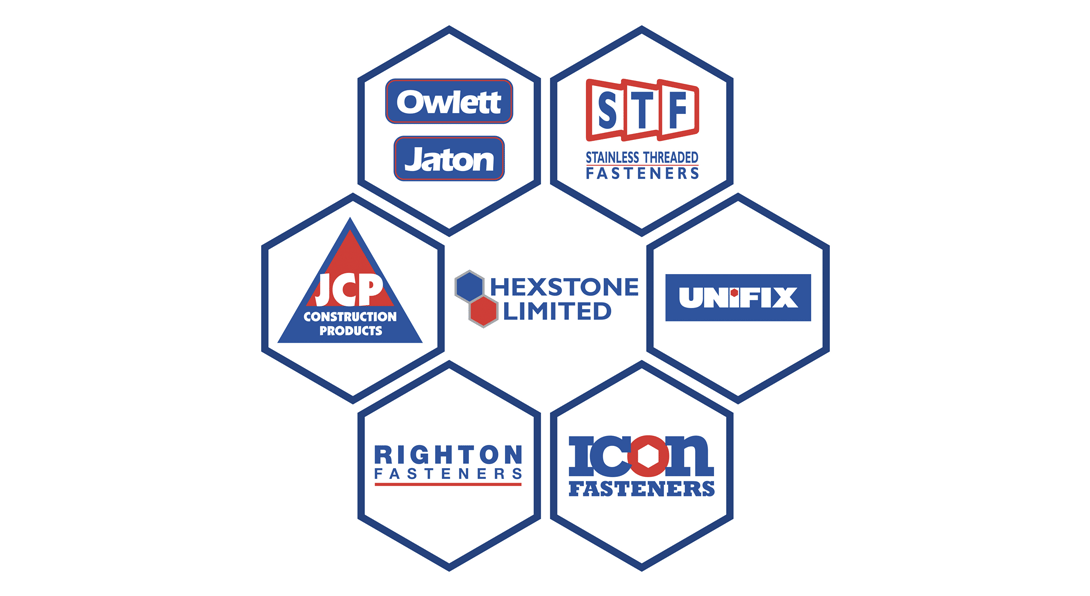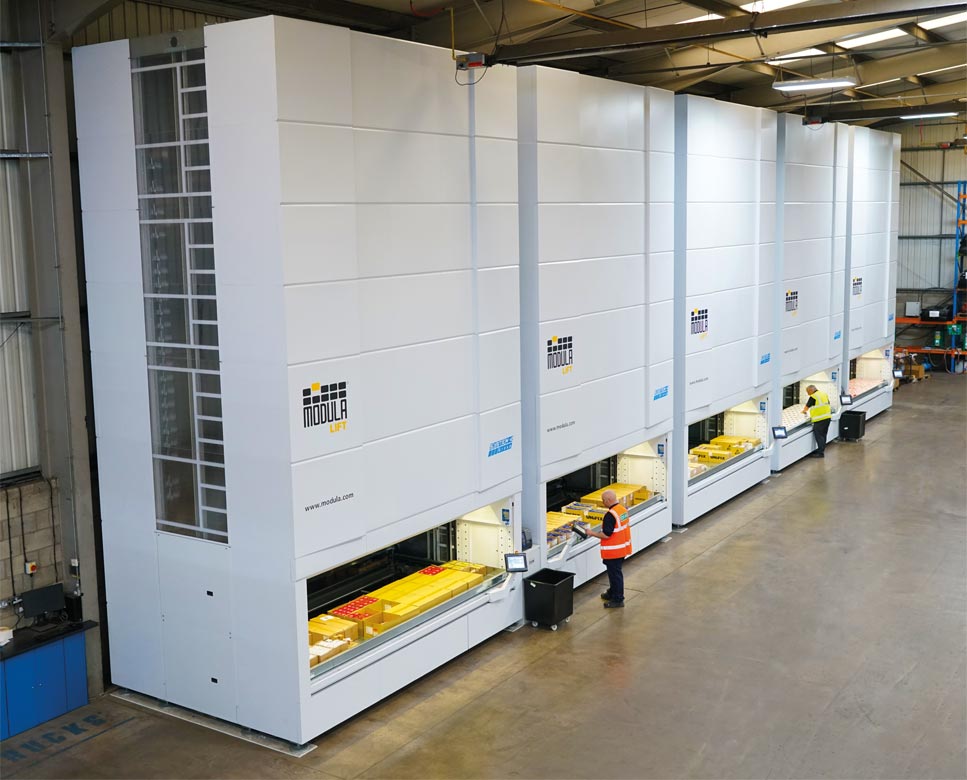
Ian Doherty is into his second year as chief executive officer of the Hexstone Group, quietly but clearly making his mark on the UK’s largest fastener and fixing wholesaler. Executive Editor Phil Matten went to learn more.
Ask Ian Doherty about his background and he will tell you emphatically, “not fasteners”. From university, he served three years in the British Army and then joined Unilever, pursuing a successful career with the fast moving consumer goods (FMCG) giant for nearly twenty years. Qualified as an accountant, general management was always his goal. Unilever’s management structure channelled him, willingly, into logistics. “I loved the planning, the bringing it all together, the making it work.” It was a time of radical change as big UK retailers centralised distribution. “It was exciting, and it was when I really got to understand customer service and the importance of product flow, of availability and reliability.”
A sales and marketing directorship was followed by appointment as managing director of a Unilever food business in Australia. Ensuring the best education for his children motivated a return to the UK and a reluctant departure from Unilever. “It had been a great time and I was sad to leave,” he says. In the UK, a series of senior positions reinforced his supply chain expertise, including running a big stationery wholesaler, “with a surprisingly large number of parallels with our own industry”. An interim directorship provided insight into the next day delivery market; followed by more learning in a private equity backed manufacturing and distribution business. “When we exited that I looked for something to which I could commit longer term. A head-hunter saw my background as a good fit for the Hexstone role – and here I am.”
“I bring no knowledge of fasteners and fixings, but I bring appreciations from an FMCG background that includes a strong recognition of the importance of brands, and an intensive understanding of how really good supply chains operate.”
“In the end our customers are looking for us to be boringly reliable; always having the product and delivering it when we say we will. Boring reliability does not, however, come easy. No-one can afford, financially or physically, to simply hold so much stock that there will never be a problem. That means becoming more and more sophisticated in how we manage the supply chain to ensure that we do deliver those high-levels of service at optimal cost.”
Joining the UK fastener industry didn’t entail too many surprises. “I knew it was a largely high volume, relatively low value transaction business.” However, he adds, “the technical aspects of fasteners and fixings blew me away”.
“To suddenly realise how much engineering goes into the design and manufacture of a fastener, how many different aspects of creating a joint exist, and just how many technical specifications there are – that was a revelation.”
“I’d never experienced that diversity. However, the food industry taught me all about working to very exact specifications, and the regulation, control and management of safety critical products. I was also used to a very large number of SKUs – more than 100,000 in the stationery business.”
“Very few people outside of the fastener industry would have any real understanding of the technical side of what we do – the support that every member of the supply chain has to provide in terms of quality and product knowledge.”
“At Hexstone I am very fortunate that we corporately possess an extraordinary reservoir of knowledge and experience – the average service period is close to 20 years. Blessed or cursed as I am with insatiable curiosity I will learn more about the technical aspects but that will never be my primary contribution to this business.”
Ian Doherty is not the only new name amongst Hexstone’s senior management. “There has been a bit of a ‘changing of the guard’, mainly through retirements and illness.”
“Nick Horton has returned to Owlett-Jaton as purchasing director, bringing vast fastener and supply market experience. Dave Cunnah is on board as operations director, bringing a distribution background, and Mark Evans replaced the retiring financial director.”
Today Hexstone is a single legal entity, servicing the market via a series of faces that reflect the acquisitions that formed it. Initially, Owlett and Jaton were acquired and merged by the US family company that continues to own Hexstone. “Owlett was more building oriented, Jaton more engineering oriented: Owlett more southerly based, Jaton more northerly based.”
“Fair to say in those days it wasn’t going terribly well, which is when Geoff Hopwood – Hexstone’s chairman, was brought in as a turnaround specialist. The options were to close a loss-making business or stick with it for the three to five years it would take to fix. The owner’s response was emphatic – they were not quitters and, besides, closure would be expensive because their business philosophy demanded they look after the people.”
In 2004 the SRB Group was acquired, bringing Icon Fasteners, Stainless Threaded Fasteners (STF), and Galaxy Fasteners, into the fold. More recently Hexstone acquired Unifix and Righton Fasteners. The Group’s approach to market has since been rationalised.

“Owlett-Jaton is the bulk of the business, dealing with both the building and engineering distribution sectors. STF is the stainless steel specialist, with people steeped in knowledge of that product and its supply chain.”
“Icon is also a specialist – in high grade fasteners and special parts. It’s not the day-to-day, off the shelf supply position, often providing products that require further processes to meet customer requirements.”
Galaxy was closed and integrated into Owlett-Jaton. Unifix was similarly integrated, but Hexstone continues to take advantage of its brand recognition. “Owlett-Jaton also handles the logistics for the JCP Fixings brand, but customer support is provided by technical sales specialists who really understand the complexities to anchor calculations, and beyond.”
In the round it is performing very well, says Ian. “We moved back into growth in 2017 and are continuing to grow and make money, which is, of course, the reason we are in business.”
“Importantly, we’re seeing market share growth, although not yet in every sector we serve – there is a lot of competition out there. Jaton has historically been stronger and has done extremely well. Our business with builders’ merchants has been weaker through lack of historic focus. We’re changing that, and making sure we have a relevant offer for all of our customers. We’re also growing at STF and Icon.”
There are a number of growth drivers. “Central is the clarity of strategy we have put in place. It’s a truism, but if you don’t know where you are going, any road will take you there. So, we’ve defined a strategy and have a very good idea where we are going. Let’s also be clear, this business definitely wasn’t broken. This is not change driven by crisis – it is evolution not revolution.”
What that means in practice depends on where you look in the Group. “For the stainless business it is about range. Historically the STF range was trimmed to a point at which it wasn’t really a credible player. In the last twelve months we’ve taken that range from 2,500 to 6,000 lines and will continue to expand it, making it relevant and cost competitive. We’re already seeing growth on the back of that.”
“For Icon it was also about ensuring relevance and to some extent about pricing, where we were a bit out of kilter. We also need to make sure people realise all the things we offer.”
“Generally, we have worked hard on stock availability, on service level, and on reliability. We are committed to making ourselves the easiest wholesaler with which to do business. That is about simple but not necessarily easy things: Quality of phone response, and the right resources to match the needs of the marketplace. We are also very clear about strengthening the interface with our customers, which means going to talk with them, to understand what they need from us.”

The transactional relationship is still largely via phone and fax. “The digital revolution is slow to arrive in our market. There are generational inhibitors and the whole market is generally conservative; which is not to say it isn’t happening.”
“The reality is many of the products are quoted and traded on a daily basis, which is a function of the market dynamics. Our market is still highly fragmented, but there will be a natural progression towards consolidation over time. As that happens, more of the interface will become digital, not least because, as the customers get larger, they will look to drive efficiencies internally.”
“We are working on how we can better interface with the more common software systems our customers operate. If someone has a Sage system for example, what about a plug-in so it can send the order direct to us electronically? Having a digital strategy is a key route forward, but it will take time in a fragmented market.”
“We are a wholesaler, and can only succeed if our customers are successful. If they send a handwritten fax, we will respond promptly. If they need to phone us, we’ll give them the best phone service. If they want to use EDI, we’ll do that too.”
Central to Hexstone’s strategy is a reiterated commitment to the role of importer-wholesaler. “Over the last twelve months we have thought clearly about what we want to be and how we define ourselves. We have some end user business, gained by historic accident. It is relatively small but I am not about to throw it away. Looking forward, however, we define ourselves very clearly as a wholesaler, which means we see our growth coming from trade customers.”
“We are committed to building that trade presence, and to honing our expertise in getting reliable product manufactured in the Far East, importing it, and demonstrating we can be the number one wholesaler of fasteners and fixings in the UK and Ireland.”
“We aim for consistency of pricing, availability, relationship, and customer service. We have invested in computer systems to enable us to manage that product flow. I’d like to say we always get it right: I’m sure we don’t, not least because of the variability in the marketplace, often factors outside our control. If lead times extend from manufacturers they do so for everybody and we can see very large swings in demand as a result – whether because a major customer or a competitor has experienced restricted availability.”
“Businesses do one of two things – they grow or decline, they do not stand still. I am determined Hexstone will grow and we are committed to investing for that growth.”

“We are investing in putting even more sales people on the road, thus increasing face-to-face relationships. Those relationships are vitally important to our understanding of what is going on in a changing marketplace, to what our customers need.”
“We are investing in the range. We’ve brought on channel accessories, and taken on the distributorship of Blind Bolt fixings and ‘Duck Foot’ plasterboard fixings. One of the big initiatives driven by the changes we are seeing in the marketplace has been the introduction of our Unifix branded pouch bag range. That is designed specifically for a more retail style presentation, because we see customers increasingly recognising the benefit of strong, visible presentation at the point of sale.”
“We are also investing in our website. Will it become the dominant relationship route with our customers? I don’t believe so, but it is an important tool for our customers to understand what we offer, check availability, and simplify many of the transactional elements.”
“Coming back to things that did surprise me about the
industry, is the need for traceability back through the supply chain and the certificates that are increasingly required, even for the simplest products. Having a slick, digital way of providing that, which eliminates the need to search a paper filing system, is crucial.”

“We are also investing in our warehouse technology. It’s all very well saying we are building our ranges, but the warehouse does not have infinitely elastic walls. We’ve spent GB£300,000 installing Modular vertical storage lifts, so that a space that historically held 500 SKUs now holds 6,500. That not only enables us to grow the range, it also makes picking faster and more efficient – crucial when we offer an order cut-off at 17:30, and the last truck leaves at 22:00.”
“Some of what we do is inevitably responsive, whether to identified customer needs or competitive activity. Mainly, however, it is about defining what we intend to be and implementing what we need to achieve that. Where things are going well – reinforce them. Where they are going less well – change and improve. We are in business to make money, so wherever we can improve efficiency and improve service to our customers – that is a win-win situation.”
“We are in the fortunate position to be extremely well funded. Where we can genuinely see an investment has a return, there is no obstacle to grasping that opportunity – our shareholders are very supportive about investing to grow the business.”
The summary for the future? “I would like to see us having as wide a range as we possibly can. Having a boringly reliable service and delivery. Being the easiest people to do business with – open and communicative.”
“I would like to see us as a leader – doing the right thing. That’s very much at the core of the owners’ values – by our people, by our customers, by our suppliers, by the marketplace. We won’t cut corners; we will stick to a very clear set of business ethics. That’s how you grow a business in the long-term – and we definitely have a long-term strategy now.”
“Above all, we intend continuing to grow. The business has been created through acquisition and it may well grow through acquisition again – but it will be the right businesses, and the right brands to take us forward as a wholesaler.”

Having held senior management roles in leading automotive and fastener businesses, Phil joined Fastener + Fixing Magazine as editor in 2002. Convinced there is no substitute for ‘being there’, over 17 years of visits and interviews around the world means he has accumulated an extraordinary knowledge and perspective of the global fastener industry, reflected in his incisive and thought provoking reporting.
Don't have an account? Sign Up
Signing up to Fastener + Fixing Magazine enables you to manage your account details.